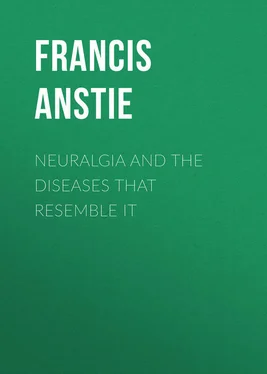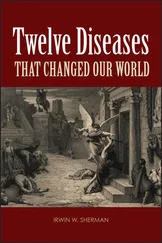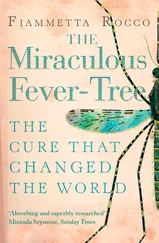Francis Anstie - Neuralgia and the Diseases that Resemble it
Здесь есть возможность читать онлайн «Francis Anstie - Neuralgia and the Diseases that Resemble it» — ознакомительный отрывок электронной книги совершенно бесплатно, а после прочтения отрывка купить полную версию. В некоторых случаях можно слушать аудио, скачать через торрент в формате fb2 и присутствует краткое содержание. Жанр: foreign_antique, foreign_prose, на английском языке. Описание произведения, (предисловие) а так же отзывы посетителей доступны на портале библиотеки ЛибКат.
- Название:Neuralgia and the Diseases that Resemble it
- Автор:
- Жанр:
- Год:неизвестен
- ISBN:нет данных
- Рейтинг книги:5 / 5. Голосов: 1
-
Избранное:Добавить в избранное
- Отзывы:
-
Ваша оценка:
- 100
- 1
- 2
- 3
- 4
- 5
Neuralgia and the Diseases that Resemble it: краткое содержание, описание и аннотация
Предлагаем к чтению аннотацию, описание, краткое содержание или предисловие (зависит от того, что написал сам автор книги «Neuralgia and the Diseases that Resemble it»). Если вы не нашли необходимую информацию о книге — напишите в комментариях, мы постараемся отыскать её.
Neuralgia and the Diseases that Resemble it — читать онлайн ознакомительный отрывок
Ниже представлен текст книги, разбитый по страницам. Система сохранения места последней прочитанной страницы, позволяет с удобством читать онлайн бесплатно книгу «Neuralgia and the Diseases that Resemble it», без необходимости каждый раз заново искать на чём Вы остановились. Поставьте закладку, и сможете в любой момент перейти на страницу, на которой закончили чтение.
Интервал:
Закладка:
Neuralgia and the Diseases that Resemble it
PREFACE
I believe it will not be disputed that there was considerable need for an English treatise dealing rather fully with the subject of Neuralgia, and therefore I hope that the profession will be willing to give me a hearing. The present work, moreover, does not profess to be a mere compilation of standard authorities corrected down to the present time, but puts forward a substantially new view of the subject – at least, a view that has been only briefly sketched by me in an article that appeared, three years ago, in Reynolds's "System of Medicine." My principal object, in writing this volume, was to vindicate for Neuralgia that distinct and independent position which I have long been convinced it really holds, and to prove that it is not a mere offshoot of the Gouty or Rheumatic diatheses, still less a mere chance symptom of a score of different and incongruous diseases. In order to set the diagnosis of true Neuralgia from its counterfeits in the clearest light, it seemed advisable to draw separate pictures of each of the latter (at least of as many as are of real importance) and present them separately, as a kind of gallery of spurious neuralgias, and this I have done in the second part of the volume. No one who had not tried to do it would imagine how difficult this latter kind of work is. It was necessary for the sketches to be very brief (unless my book was to become unmanageably large), and yet to be as truthfully characteristic as possible; and it was necessary also that only those diseases which so much resemble Neuralgia as practically to lead medical men astray in diagnosis, should be dealt with. The selection of the subjects, and the execution of this part, took a long time, though it only covers about fifty pages. Then, as regards Neuralgia itself, it became necessary to completely recast the chapters on "Pathology" and on "Complications," on account of some of the polite criticisms which Dr. Eulenburg directed (in his recent "Lehrbuch der Nervenkrankheiten") to my argument in the article above referred to, since it was obvious that a too brief statement of my views had caused them to be partially misunderstood by the German physician. These chapters (Part I., Chapters II. and III.) are certainly the most important portion of my book, and I would particularly direct attention to them, in order that their contents may be affirmed or corrected: the reader will at any time find that they contain a kind of investigation never before systematically carried out with regard to Neuralgia. The causes above mentioned, together with others over which I had no control, have kept back the appearance of this work so long beyond the date for which it was originally announced, that I feel I ought to apologize for an amount of delay that would seem hardly justified by the moderate size of the volume.
16 Wimpole Street, London, October 1, 1871.
INTRODUCTION.
ON PAIN IN GENERAL
Although it is, in a general way, unadvisable to introduce abstract discussions into a treatise which should be strictly practical, it is almost impossible to avoid some few general reflections on the physiological import of Pain, as a preliminary to the discussion of the maladies which form the subject of this volume. This whole group of disorders is linked together by the fact that pain is their most prominent feature; and, with regard to most of them, the relief of the pain is the one thing required of the physician. It seems, therefore, very important that we should ascertain, at least approximately, in what the immediate state consists, which consciousness interprets as pain. It is not necessary to enter at this stage into any inquiry as to the pathological causes of the phenomenon; what we know of these, and it is unfortunately too little, will be discussed in detail under the headings of the several affections which I shall have to describe.
The question before us now is this: What is that functional state of the nerves which consciousness interprets as pain? Is it, or is it not, an exaltation of the ordinary function of sensation?
The latter question is generally answered affirmatively, without much thought, by those to whom it casually occurs; but indeed there is plenty of prescriptive authority for so dealing with it. Pain has been described by some of the most distinguished writers on nervous diseases as a hyperæsthesia. Yet there is really little difficulty in convincing ourselves, if we institute a thorough inquiry into the matter, that pain is certainly not a hyperæsthesia, or excess of ordinary sensory function, but something which, if not the exact opposite of this, is very nearly so.
The leading fallacy in the common view is the confusion which is perpetually being made between function and action. Now, the function of individual nerves is very nearly a constant quantity, at least, it varies only within narrow limits; while the action of the same nerves may be almost any thing. The function of the nerve is that kind of work for which it is fit when its molecular structure is healthy; it is the series of dynamic reactions which are necessarily produced in nerve-tissue by the external influences which surround and impinge upon it in the conditions of ordinary existence. The action of nerves, under the pressure of extraordinary influences, may include all manner of vagaries which really have nothing in common with the effects of ordinary functional stimulation; which are, in fact, nothing but perturbation. No one can suppose, for instance, that the explosive disturbances of nerve-force which give rise to the convulsions of tetanus are any mere exaggerated degree of the orderly and symmetrical action by which the healthy nerve responds to the stimulus of volition ordering a given set of muscles to contract; they are something quite different in kind. And so it is with the sensory nerves. The functions of these conductors, in health, is to convey to the perceptive centres the sensations, varying only within a most limited range, which correspond to a state of well-being of the organs, and which excite only those reflex actions that are necessary to life. Thus the large surface of sensitive nerve terminals which is represented by the collective peripheral branches of the fifth cranial conveys to the medulla oblongata an impression, derived from the temperature and movement of the surrounding air, when the latter is neither too hot nor too cold, which imparts to the brain a perception of comfortable sensations, and excites in return the reflex action of breathing, which is necessary to life. But the impression produced on this same peripheral expanse of nerve-branches by prolonged exposure to cold wind may, and often does, convey to the centres sensations which are quite different and provokes reflex movements which are altogether abnormal. Pain is the product in one direction; sneezing, perhaps, in the other. It seems absurd to say that sneezing is any part of the function of those motor nerves whose action regulates the performance of expiration. And it appears to me not less absurd to say that pain is the function of the sensitive fibres of the trigeminus. But the best way, perhaps, to illustrate the looseness and incorrectness of applying the term "hyperæsthesia" (implying exalted function) to the state of sensitive nerves when suffering pain, is to examine the condition of distinctive perception in the very same parts to which the painful nerves are distributed. It will invariably be found, as we shall have occasion to see more fully proved hereafter, that, in parts which are acutely painful, a marked bluntness of the tactile perceptions can be detected. The tactile perceptions are, no doubt, conveyed by an independent set of fibres from those which convey the sense of pain. 1 1 See, on this subject, some remarks, in my work on "Stimulants and Narcotics" on Sir W. Hamilton's "Theory of the Relations of Perception and Common Sensation." A very distinct and careful statement of the distinction between pain and hyperæsthesia will be found in a prize essay "On Neuralgia" by M. C. Vanlair, Jour. de Bruxelles, tom. xl., xli., 1865.
Yet it is surely impossible to believe the effect of the same influence, in functional power can be different – much more than it can be exactly opposite – in the two cases.
Интервал:
Закладка:
Похожие книги на «Neuralgia and the Diseases that Resemble it»
Представляем Вашему вниманию похожие книги на «Neuralgia and the Diseases that Resemble it» списком для выбора. Мы отобрали схожую по названию и смыслу литературу в надежде предоставить читателям больше вариантов отыскать новые, интересные, ещё непрочитанные произведения.
Обсуждение, отзывы о книге «Neuralgia and the Diseases that Resemble it» и просто собственные мнения читателей. Оставьте ваши комментарии, напишите, что Вы думаете о произведении, его смысле или главных героях. Укажите что конкретно понравилось, а что нет, и почему Вы так считаете.












